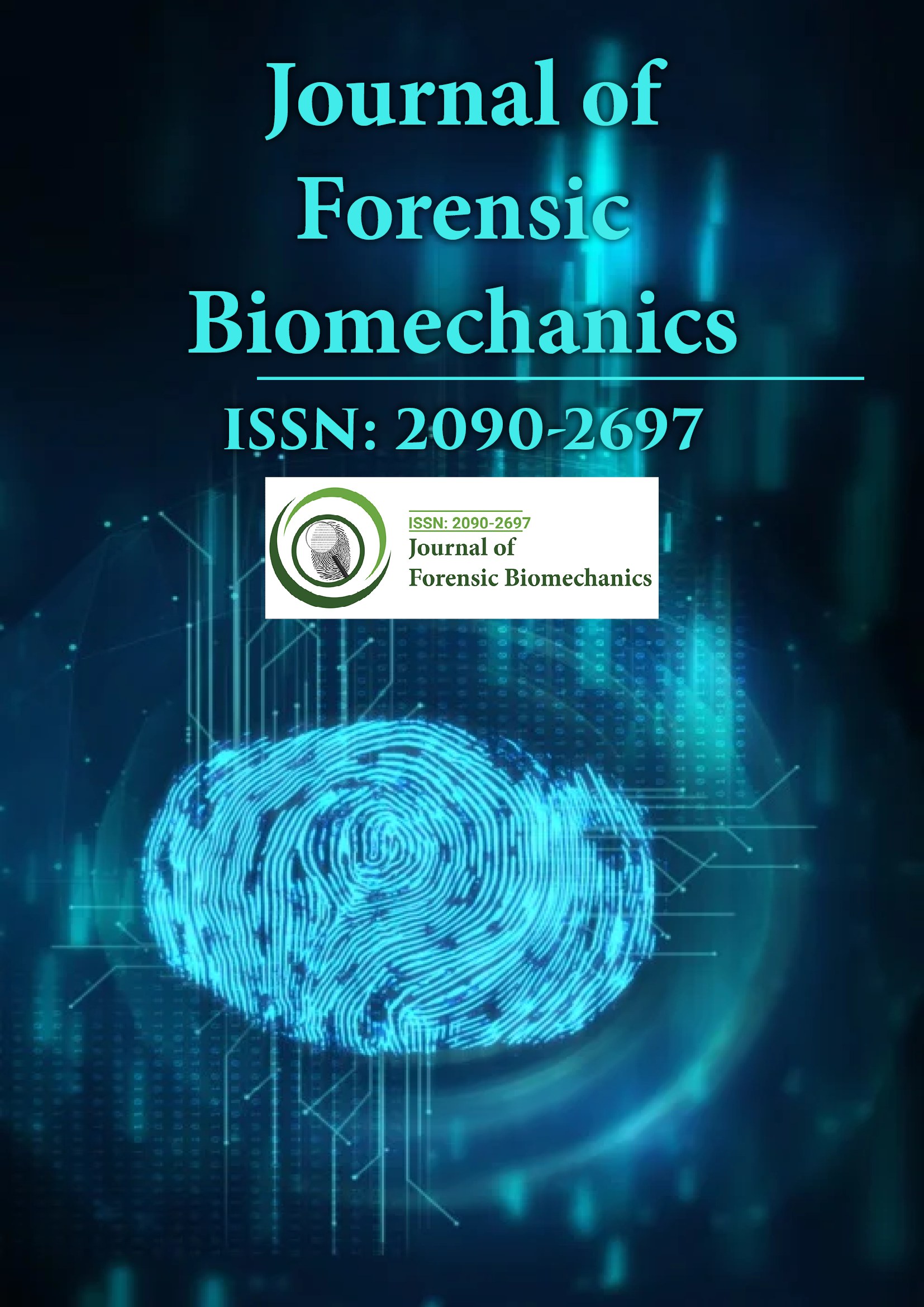Indexed In
- Genamics JournalSeek
- SafetyLit
- Ulrich's Periodicals Directory
- RefSeek
- Hamdard University
- EBSCO A-Z
- Geneva Foundation for Medical Education and Research
- Euro Pub
- Google Scholar
Useful Links
Share This Page
Journal Flyer

Open Access Journals
- Agri and Aquaculture
- Biochemistry
- Bioinformatics & Systems Biology
- Business & Management
- Chemistry
- Clinical Sciences
- Engineering
- Food & Nutrition
- General Science
- Genetics & Molecular Biology
- Immunology & Microbiology
- Medical Sciences
- Neuroscience & Psychology
- Nursing & Health Care
- Pharmaceutical Sciences
Commentary - (2025) Volume 16, Issue 1
Reconstructing Crime Scenes: The Role of Biomechanics in Injury Analysis
Ajay Vikram*Received: 01-Jan-2025, Manuscript No. JFB-25-28531 ; Editor assigned: 03-Jan-2025, Pre QC No. JFB-25-28531 (PQ); Reviewed: 17-Jan-2025, QC No. JFB-25-28531 ; Revised: 24-Jan-2025, Manuscript No. JFB-25-28531 (R); Published: 31-Jan-2025, DOI: 10.35248/2090-2697.25.16.511
Description
Forensic biomechanics is a specialized field that applies mechanical principles to biological systems, particularly in the analysis of injuries related to crimes or accidents. This discipline plays a vital role in crime scene reconstruction, providing critical insights into how injuries occur, the forces involved, and the sequence of events that led to pain. By analyzing the mechanics of human movement and the response of the body to external forces, forensic biomechanists help investigators establish whether injuries align with witness statements, suspect claims, or the available physical evidence. Injury analysis through biomechanics relies on principles of physics, engineering, and human anatomy to understand the dynamics of an incident. Every injury results from a combination of force, motion, and material resistance. Forensic biomechanists assess these factors to determine the origin and nature of the shock. For instance, in cases of blunt force suffering, experts analyze skull fractures, rib damage, or bruising patterns to establish whether the impact was caused by a fall, a weapon, or an intentional act of violence.
By evaluating the shape, size, and depth of an injury, they can often differentiate between accidental harm and deliberate assault. One of the critical aspects of forensic biomechanics is the study of falls and their impact on the human body. Falls can occur from different heights, angles, and surfaces, each producing unique injury patterns. For example, injuries sustained from a free fall differ from those resulting from a push. The distribution of fractures, head pain, and soft tissue damage helps biomechanists assess whether a fall was accidental or forced. In cases where a person claims to have fallen down the stairs, experts analyze the injury locations and the impact points to verify whether the injuries match such a scenario or if external force was involved. Gait analysis is another critical application of forensic biomechanics in crime scene reconstruction. By studying the way a person moves, their step length, foot pressure distribution, and body mechanics, experts can compare suspect footage with crime scene evidence. In cases where security cameras capture an unidentified individual walking or running away from the scene, gait analysis can help determine whether the movements match a known suspect. This technique has been used in legal cases to confirm or challenge the involvement of individuals based on their unique biomechanical signatures.
Despite its many advantages, forensic biomechanics also faces challenges. Variability in human physiology, inconsistencies in witness reports, and limitations in available data can make injury analysis complex. However, advancements in technology, such as high-speed motion capture, finite element analysis, and AI-based injury prediction models, are continually improving the accuracy of forensic biomechanics. These innovations enable experts to analyze injuries with greater precision, reducing uncertainties and strengthening forensic investigations. As forensic biomechanics continues to evolve, its role in crime scene reconstruction will only become more significant. By combining principles of mechanics, medicine, and forensic science, this field provides objective, science-backed insights that help solve crimes, validate evidence, and ensure justice is served. Whether in cases of homicides, assaults, traffic accidents, or wrongful injury claims, forensic biomechanics remains an indispensable tool in uncovering the truth behind injuries and human movement dynamics.
Citation: Vikram A (2025). Reconstructing Crime Scenes: The Role of Biomechanics in Injury Analysis. J Forensic Biomech. 16:511.
Copyright: © 2025 Vikram A. This is an open-access article distributed under the terms of the Creative Commons Attribution License, which permits unrestricted use, distribution, and reproduction in any medium, provided the original author and source are credited.

